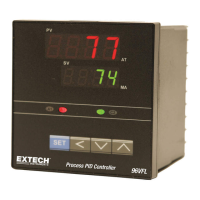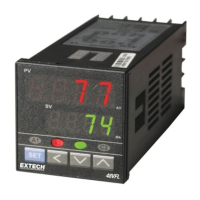J
John ColemanJul 25, 2025
Why does the Process Value change abnormally on my Extech Instruments Controller?
- MmoniquedavisJul 25, 2025
If the Process Value of your Extech Instruments Controller changes abnormally, it might be due to Electromagnetic (EMI) or Radio Frequency (RFI) interference. To address this, protect the controller using arc suppressing external circuitry to eliminate high voltage spikes, ensure the sensor and power wiring are separated, and ground the heaters.





